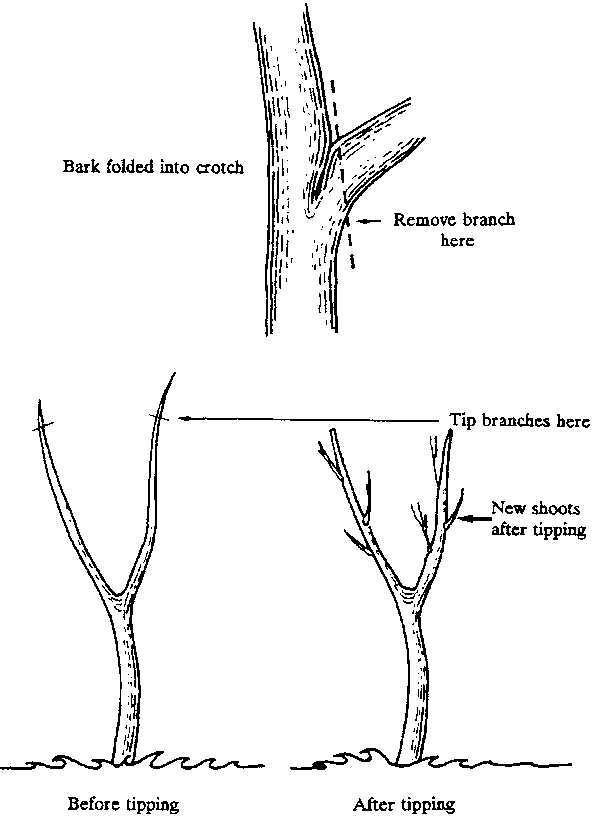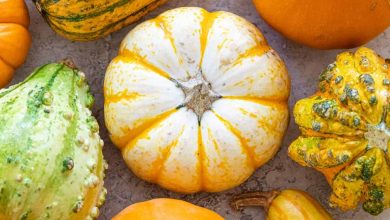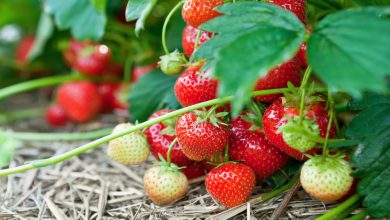Aloe Arborescens: [Cultivation, Irrigation, Associations, Pests and Diseases]
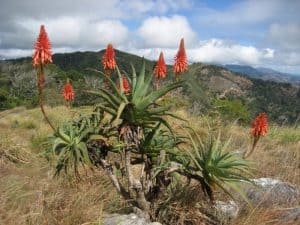
Important points when planting Aloe arborescens
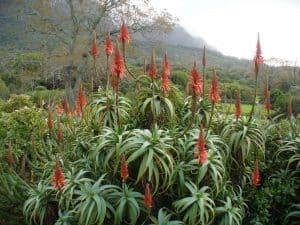 Where to sow? In full light. It doesn’t need too much sun.
Where to sow? In full light. It doesn’t need too much sun.- When? In spring and in summer.
- How do we prepare the land? removed. Eliminating weeds. With special substrate for cacti and succulents.
- How do we water? with drip
- How often do we water? In summer 1 time a week abundantly. Rest of the year limit irrigation to 1 time every 15 days.
- Plagues and diseases? It ispest resistant and not prone to disease.
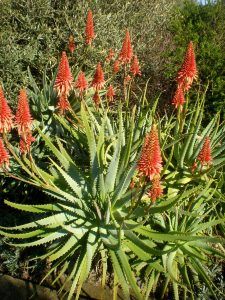 Aloe arborescens is a succulent plant native to the southeastern coast of Africa. It is known as octopus plant, candelabra aloe, candelabra or aloe.
Aloe arborescens is a succulent plant native to the southeastern coast of Africa. It is known as octopus plant, candelabra aloe, candelabra or aloe.
The etymology of the word comes from the Greek «Alos» which means «sea», and Arborescens: Epithet from the Latin meaning » tree -shaped «.
Aloe thorns were believed to ward off evil spirits, so they were placed at the entrance to houses and gardens.
It shares the medicinal properties of its more famous sister “Aloe Vera” and has historically been used to treat skin burns and chafing. Aloe arborescens has been used in several clinical trials to test its efficacy in treating burns with promising results.
When to plant Aloe arborescens?
The planting season of aloe arborescens begins with the rain, in the months of May to June, but if there are good irrigation conditions it can be established at any time of the year.
Where to do it?
Aloe arborescens is a plant with good tolerance to hot and dry climates , even low temperatures as long as they do not drop below 0 degrees, since frost can seriously affect the plant.
It needs many hours of light. Therefore, it can be sown without problems both in direct sun and semi-shade. The arborescent aloe is ideal for outdoors , with its green leaves and yellow and red flowers and can reach 4 meters in height.
How to prepare the land?
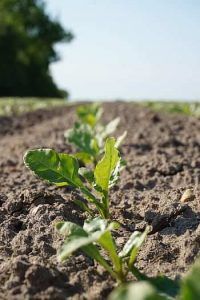 Aloe arborescens has a wide range of adaptation to different climates and soils, and can be found growing on soils with slopes of 30%, with poor fertilization and little fertile soil.
Aloe arborescens has a wide range of adaptation to different climates and soils, and can be found growing on soils with slopes of 30%, with poor fertilization and little fertile soil.
To prepare the land for planting aloe arborescens, it is necessary to make a mixed mixture of soil, organic matter and sand for the development of the species in the bag.
After two months and when the plants are already rooted, they are taken to the final place, for which it is necessary to prepare the holes for planting.
To achieve the best development of the leaves and the best quality of the gelatin where the aloin is found, it is recommended that the planting holes have organic matter; to eradicate any trace of chemical elements.
If the terrain is inclined, it is necessary to carry out soil conservation works (transverse furrows) to prevent the soil layer from eroding, losing its fertility. It is also necessary that there be ease to remove the aloe leaves at the time of harvest. (Roads or trails).
How do we water Aloe arborescens?
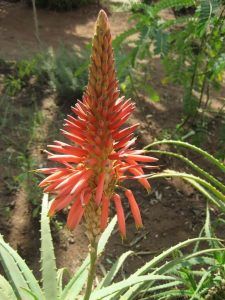 Aloe arborescens is a succulent that is very resistant to drought, so its irrigation should be infrequent but abundant. The substrate must always be completely dry before watering again.
Aloe arborescens is a succulent that is very resistant to drought, so its irrigation should be infrequent but abundant. The substrate must always be completely dry before watering again.
In winter, watering should be limited to a minimum. In addition, it is necessary to ensure that the substrate or soil has good drainage, and try to water only when it is really necessary.
To find out if the substrate is completely dry, you can insert a thin wooden stick all the way in, for example: if it comes out clean or practically clean when extracted, it is a sign that it is time to water.
In any case, it is important to know that in principle one or two waterings a week during the summer and one every 10 to 15 days the rest of the year is enough for aloe arborescens. When watering, abundant water should be placed until the soil is very moist.
And if it is planted in a pot, it should be placed with a plate underneath, and then remove the excess water 30 minutes after watering. Watering should be abundant but infrequent. The most important thing is to avoid excess humidity, especially in winter. Otherwise, the plant will quickly rot.
How do we plant an Aloe arborescens step by step?
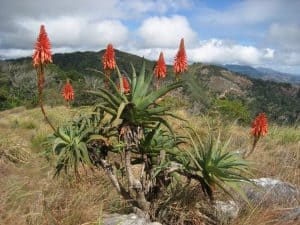 Aloe arborescens can be reproduced in several ways, through seeds or cuttings. The simplest thing is reproduction by cuttings and shoots, if it is done in orchards or home gardens.
Aloe arborescens can be reproduced in several ways, through seeds or cuttings. The simplest thing is reproduction by cuttings and shoots, if it is done in orchards or home gardens.
For planting this plant or any of them, it is important to have sharp and appropriate tools for gardening.
Planting by cuttings or suckers
- Cut a cutting or one of the suckers of the plant from the root and replant it in its own pot.
- If the decision is to plant the cutting, before planting it is advisable to wait a few days for it to dry and form a callus in the place of the cut. This way the plant does not absorb excess water and prevents it from rotting.
- Plant the cutting or sapling in a special substrate for cacti and succulents and water lightly, but do not water again until the substrate is completely dry.
- Place the plant in full light for its full development or also place it in semi-shade while it reproduces.
Planting by seeds
- Place the seeds on substrates with good drainage previously watered, burying a little so that they are not too exposed.
- Locate the seedbed outside, in partial shade, but in an area with a lot of light.
- Keeping the substrate moist (but not flooded) they will germinate in about 15 days.
- Finally, if the aloe arborescens is planted in a pot, either by seeds, by cuttings or by shoots, it is necessary that said container has holes in the lower part so that the water can drain well.
What favorable associations does it have?
The association of crops of compatible plants produces benefits with respect to their cultivation separately, in addition to the use of light, water and/or nutrients.
Aloe arborescens, is a succulent and at the same time has medicinal benefits, it is important to take into account all these characteristics when thinking about any beneficial association for the plant.
What pests and diseases attack Aloe arborescens?
In general, Aloe arborescens is very resistant. You just have to try not to overwater so that the fungi do not harm it, and protect it from snails during the rainy season.
Bibliography and references
- Van, U, Alfonso; April, M.; Duarte, Theoretical-practical course on the cultivation of aloe (Aloe Barbadensis Miller) and alternative plantations. Biologics Brabant. Tolima- Colombia. (PDF).
digital database
- Clubsuculentas.com. Aloe arborescens. Reproduced from: https://clubsuculentas.com/asphodeloideae/aloe/aloe-arborescens
- Consultaplantas.com. Aloe arborescens or arborescent Aloe plant care. Reproduced from: http://www.consultaplantas.com/index.php/plantas-por-nombre/plantas-de-la-aa-la-c/64-cubiertas-de-la-planta-aloe-arborescens-o -aloe-arborescent
- Cybercactus.com. Aloe arborescens. Reproduced from: https://cibercactus.com/aloe-arborescens/

